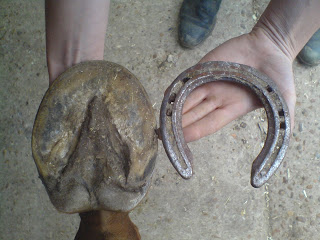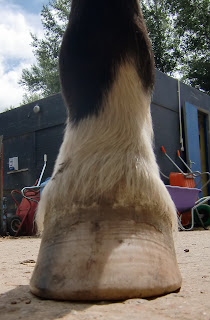I make no claim to be an expert in equine nutrition, disease or otherwise. But I am reasonably good at reading hooves, and time and again it has been proven to me that the barefoot hoof is a window to a horse's true health.
And we all want our horses to be in the best of health don't we? I appreciate that not everyone is as soppy about their animals as I am, but even the truly hard nosed among us must realise it makes economic sense if nothing else?
So if you have a horse that outwardly appears to be in full, bouncing, splendid health, but is footy over stones what do you do? Well trust the hoof for a start, a horse that can't manage stones is not in perfect health and in the wild is going to get eaten. In domestication, long term, they might get shot.
Well many of us (self included) end up wrestling with this problem for one horse or another. Often, the answer lies with diet, but sometimes the diet and environment etc appear to be very good, but still the horse remains footy. So other options are explored including Seasonal Rise, temperature/humidity, hormonal status and so forth. These are allowed for, or discounted and still the horse remains footy.
Well for some, the answer may lie in a rarely discussed condition called Leaky Gut Syndrome. It doesn't just cause mystery footiness, there are many other currently un/misdiagnosed conditions that may also have a root in this condition.
Websites, forums and blogs are no place to diagnose an illness/problem. But the purpose of this blog is to be informative and to encourage people in their barefoot journey, including when things get tricky (hence all the transition and before/after photos).
So have a gander (look) at this:
Leaky Gut Syndrome explained if you think it fits your circumstances why not discuss the possibility with your vet?
Need a product to help with Leaky Gut? Try
Thunderbrook (UK).
































































